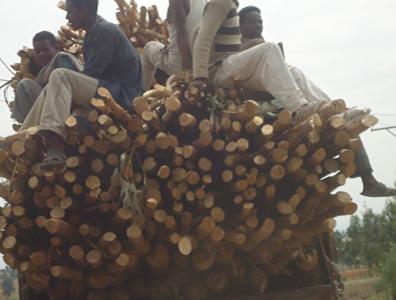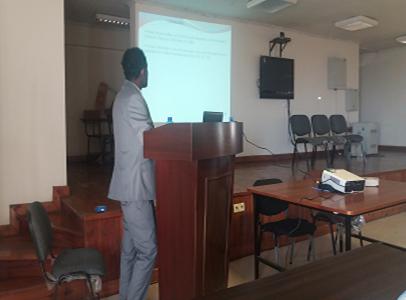Habte Telila
Other projects
23 Feb 2017
The Ecological Roles of Isolated Retained Trees of Podocarpus falcatus and Juniperus procera in Association to Eucalyptus Plantations in a Farmscape
To investigate to what extent herb species colonize Eucalyptus plantations focusing on factors such as grazing and shade, age of plantations, connectivity to diaspore sources and dispersal traits

Timber Woods of Eucalyptus cut and sold by farmers from around Chilimo forest and transported to Addis Ababa ©Habte Telila
Recovery of biodiversity is a critical concern of ecological restoration, especially biodiversity in Eucalyptus plantation is the most prominent concern because of intense debates on its effect. Particularly there is a need to determine the suitability of Eucalyptus patches for ground flora such as herbs. For example, herbs play a role in the maintenance of nutrient cycling and ecological balance and they are also indicators of conservation status. The effectiveness of plantations in restoring biodiversity are expected to be influenced by distance to the native seed source and presence of seed dispersing agents (Yirdaw 2001; Telila et al. 2015) , plantation species and age (Geldenhuys 1997; Brockerhoff et al. 2003). Furthermore, it could be influenced by disturbances such as grazing (Telila et al. 2015) and canopy openness (Lemenih et al. 2004).

Power point presentation of my (Habte Telila) PhD thesis includes the project funded by Rufford Foundation. ©Habte Telila
Ethiopia has one of the longest forest plantation histories in Africa (Pohjonen & Pukkala 1990 to relieve the shortage of wood caused by extensive deforestation that has resulted in variegated landscapes dotted with Eucalyptus plantations embedded in agricultural landscape at various distances to continuous natural forests. Thus, understanding of the roles of these Eucalyptus plantations for the restoration of native plant species is vital to design a robust conservation planning. The aim of the the study is to investigate to what extent herb species colonize Eucalyptus plantations focusing on factors such as grazing and shade, age of plantations, connectivity to diaspore sources and dispersal traits and also to understand the farmers’ perspectives on using Eucalyptus plantations to foster native herb species.
The study will be conducted in central Ethiopia surrounding the remnant Chilimo forest, which is located at about 90 km west of Addis Ababa (9°04' 37'' N and 38°09' 50'' E). Chilimo forest is surrounded by vast areas of agricultural land which is characterized by very low cover of trees, a mosaic of small fields, home-gardens, grazing lands, wetlands and interspersed by small plantations of exotic trees (Farm Africa 1996). The Eucalyptus plantations will be selected from Google earth picture and all herb species will be recorded from each patch. The distance and size of the patches will be calculated using Arc Gis software. The data on the opinion of the farmers will be collected by using semi-structured questionnaire. The data will be analyzed using R software.